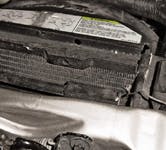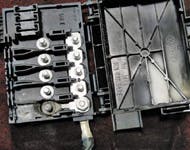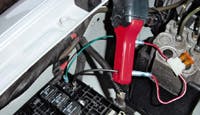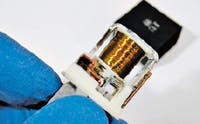This simple system is best tested when split in half.
Mechanical fans and viscous clutch fans do a fine job of keeping air flowing across the radiator's cooling fins. However, their constant drain on the engine's usable horsepower made it inevitable that electric fans soon would replace them as the preferred choice for temperature control. Electric fans could be turned on and off as needed and, without a direct link to the engine, power loss caused by the drag of mechanical fans was eliminated.
The operation of electric cooling fans is not complicated, and troubleshooting a loss of fan operation usually is pretty straightforward. This month, I'll share a few tips on diagnosing common faults.Basic Testing
Your customer complained of overheating, and you traced the cause to a loss of coolant from a leaking water pump. You've repaired the leak and verified there are no others. Are you ready to return the car to the customer?
Not quite. Before I sign off on any cooling system repair, I want to make sure the system is working as it should be. I want to know that the Engine Coolant Temperature (ECT) sensor is reading accurately and that the thermostat is opening when it should. I want to know that the cooling fan(s) come on and shut off when they are supposed to. And I want to know that there aren't any strange noises coming from the cooling fan(s) or the motor(s).
To perform my test, I use a scan tool to monitor the ECT Parameter Identifier (PID) and my Digital Multimeter (DMM) with a thermistor to monitor the temperature of the radiator near the inlet from the thermostat. I might grab my IR temperature gun to keep an eye on the actual temperature of the engine to see if the ECT reading is reasonable.
With the car cold, I start it up and set the HVAC controls for maximum heating. Make sure the A/C is turned off, because you don't want the fans coming on as a result of high side pressure in the A/C system. Electric fans generally are controlled by a relay, which in turn is controlled by the Engine Control Module (ECM). The inputs the ECM uses to turn the fans on are different for an A/C request and would make this test invalid. I watch the temperature of the engine increase, looking for it to reach the specification for thermostat opening. This is usually around 190 to 200 degrees Fahrenheit, but check your service information to be sure.
If the thermostat is opening correctly, I should see a rapid rise in the reading on my DMM as soon as it does. The inlet hose will get hot along its entire length, further confirming the thermostat opened. If the thermostat was stuck open or leaking, the temperature on the DMM would begin to increase immediately after startup. If the thermostat was stuck closed, the temperature would remain closer to ambient.
Once the thermostat operation is verified, I move on to the cooling fans' operation. The engine is still running, and now I focus on the DMM reading. Typically, the cooling fans should come on when this temperature reaches 200 to 220 degrees Fahrenheit. They should cut off after the temperature drops roughly 50 degrees. If the DMM reading starts heading above 240 degrees Fahrenheit, I begin to suspect there's a problem. Just before I shut the engine down, I'll turn the A/C on to see if the fan(s) come on at all. If they do, at least I know the fan motor(s) are working.
Where is the Fault?
Reviewing the schematic is the first step in determining what went wrong. Most electric cooling fans get their power from an ECM-controlled relay. Once you've identified all the components and their locations, you can move on to some pinpoint tests. The relay can be used to split the circuit into two halves — one half is the cooling fan motor circuit itself and the other is the relay control circuit that includes the ECM and its inputs.Be on the lookout for any strange noises that indicate a problem with the motor. A growling motor might be taking too much current to run and might still require replacement.
If this fails, verify power to the relay and the integrity of the ECM ground path from the relay to the ECM connector. If the fan motor works, shift your aim to the ECM inputs and maybe the ECM itself.









